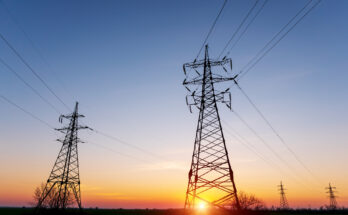Equinor, the world’s biggest producer of floating offshore wind, has created a new floating wind concept that will allow for industrial standardization while also maximizing chances for local supply chains.
Upon reaffirmation of its commitment to Scotland earlier this year, the offshore energy business has today disclosed its preferred floating wind foundation Design for full-scale gigawatt (GW) commercial floating offshore wind if ScotWind is successful. The Wind Semi, a semisubmersible wind turbine foundation, was created with flexibility in mind, allowing manufacturing and assembly to be done using local resources.
“In Scotland, we are prepared to construct the next generation of large-scale commercial floating offshore wind.” We propose to create GW-size floating projects in a single step, utilizing our twenty years of floating offshore wind experience and innovations. The implementation of large-scale projects will hasten Scotland’s transition to net zero energy. This project would be over 30 times larger than Hywind Scotland, the UK’s and Equinor’s first floating project, and would have the potential to position Scotland as a leader in deep water technology, as well as create opportunities for both existing suppliers and new entrants to the offshore wind sector,” says Sonja C. Indreb, Equinor’s vice president of Floating Offshore Wind.
Equinor has established a set of Design principles and solutions that can be applied across floating ideas to ensure that the technology can be deployed cost efficiently while maximizing local advantages.
Equinor erected the world’s first floating offshore wind turbine in 2009, and it now owns and runs Hywind Scotland (30 MW), the first floating wind farm in the world. Since its inception in 2017, Hywind Scotland has regularly outperformed other UK wind farms in terms of capacity factor, revealing the actual potential of floating offshore wind.
“Hywind Scotland shown that the floating idea works, and as we move forward with the next generation of floating offshore wind projects, we need to show that floating offshore wind can be deployed at scale, in multiple geographies, and with local advantages. We’ve witnessed the evolution of fixed-bottom offshore wind, and with our extensive expertise in floating, we’ll be able to apply what we’ve learned as we build and invent concepts for full-scale GW floating wind farms,” adds Indreb.
The Wind Semi has various qualities that make it particularly well-suited to rough conditions, as well as ideas that can help the Scottish supply chain grow:
Increased dependability: The Wind Semi has a simple substructure design thanks to the use of a passive ballast system, which reduces the chance of system failure and the amount of maintenance required.
Design that is simpler and more durable: A flat plate design without bracings, heaving plates, or complex nodes that are prone to fatigue cracking.
Flexibility when it comes to the supply chain: The Wind Semi’s turbine integration can be constructed at most industrialized ports with a harbor draught of less than 10 m. Because of the Wind Semi’s flat plate design, the substructure may be erected in blocks that can be produced locally or supplied from elsewhere.
“Scotland has the potential to be at the cutting edge of this intriguing technology. We questioned ourselves how we might achieve industrial standardization and maximize local content prospects in floating offshore wind projects to provide additional and long-term value. We took our knowledge and went back to the fundamentals using a design-based approach to integrate this focus in the initial concept design,” explains Indreb.
Equinor will choose the floating wind idea that is most suited to its projects. The depths of the water, the circumstances near shipyards and ports, and the specializations and capacity of the local supply chain are all important factors in deciding which design to choose.
Competitive full-scale floating wind farms need selecting the most cost-effective concept design and attaining optimal manufacturing efficiency. Equinor will actively work in Scotland to establish a larger and more competitive supply chain capable of safely, on time, and on budget delivering ScotWind floating projects. Equinor will collaborate closely with domestic supply chains in Scotland and the rest of the United Kingdom to maximize potential for local suppliers and communities.
Equinor is committed to long-term wealth generation in a low-carbon future, with a goal of becoming carbon-neutral by 2030.
Equinor offers a wide range of initiatives in Scotland that contribute to a sustainable energy transition. Aside from Hywind Scotland, Equinor and its partner, SSE Thermal, are planning to jointly create a new low-carbon power plant, which might be one of the UK’s first to use carbon capture technology. The Peterhead CCS Electricity Station would help the UK achieve its carbon capture goals in power generation, achieving 15% of the government’s 10-million-tonne carbon capture objective by 2030. Equinor’s upstream operations headquarters are in Aberdeen, where about 500 workers work onshore and offshore, including the Mariner field east of Shetland.
Equinor is the only firm in the UK with the full complement of operational assets in offshore wind and oil & gas, as well as an established energy trading business and opportunities in developing industries such as hydrogen and carbon capture and storage. Equinor’s three offshore wind farms, Sheringham Shoal (317MW), Dudgeon (402MW), and Hywind Scotland, collectively power over 750,000 UK households (30MW). Equinor is also a partner in Dogger Bank, the world’s largest offshore wind farm, which is now being built. With a capacity of 3.6 GW, this wind farm will be the world’s biggest and a showcase for digitization and innovation.
Equinor will manage the wind farm for up to 35 years from its base in the North East of England. Aberdeen’s North Star will provide the wind farm’s Service Operations Vessels, generating 130 employments in the UK. North star was able to join the renewables industry and attract further investment because to the £270 million deal. The offshore wind company also plans to expand its Dudgeon and Sheringham Shoal wind farms, bringing the total capacity of offshore wind off the coast of Norfolk to 719MW.
Equinor is building the world’s biggest floating offshore wind farm, Hywind Tampen (88 MW), in the Norwegian North Sea, which will be operational in 2022.





